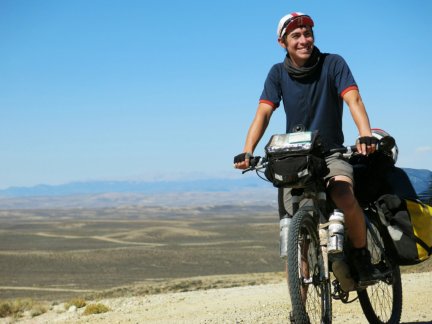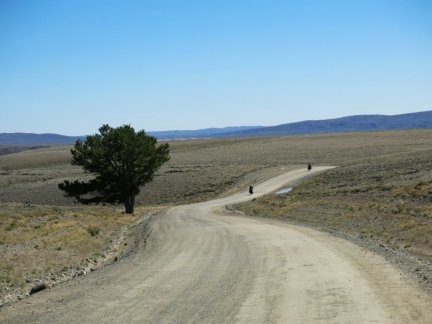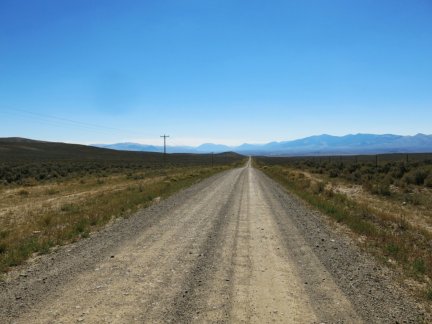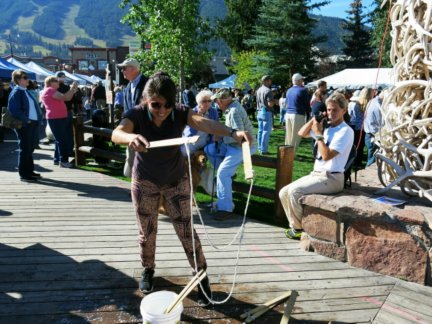Lots of exciting things happening in the US. First is the opportunity to visit a lot of friends from school. Second is the start of the Great Divide trail, that mostly dirt/gravel road hugging and criss-crossing over the Continental Divide down through Montana, Utah, Colorado, and New Mexico. I’ve been looking forward to this trail since I started doing research for this trip. Apart from two of those highways in Alaska, this will be my first experience doing extended dirt touring. After the hordes of RVs in Alaska and on the Icefields Parkway, should be a great change of pace. Hopefully the legs are in shape now…
But first: Sandpoint, ID.
Rewind to the end of the first week of the trip: I’m back in Fairbanks, after finishing the Dalton Highway, running errands around town. Fairbanks turns out to be a good place to meet other cyclists, because both those headed north and south stop by to resupply. Outside the post office, I run into three cyclists who had ridden up from Idaho, and after getting some information about the roads through Canada, one mentions this small town in Idaho which is close to Montana and could be a fun town to stop out. I make a note of this, and then find out that a friend from school, Gladys, is actually working in the same town in Idaho for the summer. This is a perfect combination- a friend to visit, a place to stay, and a deadline to get there that should be ok for avoiding getting snowed out on the Great Divide. Luckily, everything worked out and so I spent a few days in Sandpoint, resting, eating ice cream and fudge and then delicious foods at Labor Day picnics. Huge thanks to Mac + family and Gladys + family for hosting me!
 Back in the US. I crossed the border south of Yahk, Canada and north of Bonners Ferry, ID. Seemed like a pretty quiet border crossing- only had to wait for 1 car! No problems with re-entering the US this time… hoping for the same the next time I come back.
Back in the US. I crossed the border south of Yahk, Canada and north of Bonners Ferry, ID. Seemed like a pretty quiet border crossing- only had to wait for 1 car! No problems with re-entering the US this time… hoping for the same the next time I come back.

Roadside parking of cars past their prime is the norm, usually complete with one or more American flags. America pride!

Labor Day sunset in Sandpoint.

Gladys and me!
After Sandpoint, I headed east to Kalispell, to meet up with Forest, another friend from school. The route to Kalispell was a very fun ride. First headed east on Rt 200, a quiet two-lane road that wound past several lakes. Every couple of miles there was a pull-off with informational plaques about the lake, about the wildlife, how the land was shaped by glacier movement, etc. Slightly more scenic than the road to Sandpoint from the border. After Thomson Falls, MT, I turned off the pavement and headed north on the forest service roads through the National Forest. Seems like these roads are used mainly for logging and fishing/hunting. Was about 50miles of gravel to connect from Rt 200 up to Rt 2, maybe a good preview of the Great Divide route. Stayed in one of the campgrounds off the forest service road for a night, had the whole place to myself. A sign on the information board said the campground is only maintained until Sept 21, good reminder to keep heading south.

After crossing into Montana, started seeing more and more apple trees, some in orchards, some just by the side of the road. Great to start having other fresh fruit than just the berries of the far north.

Also everywhere in Montana: deer. Forest says hunting season starts sometime this week, hopefully some of these guys get a little more skittish before then.

Riding on a forest service road: blissfully quiet, though the gravel and some of the ruts mean it’s time to turn the front suspension back on again.

Oncoming traffic, Montana style. Only roadblock of the afternoon.

Hay farms are everywhere up here.

The last 10-15 miles into Kalispell were on a great bike path. Road recap: quiet paved country roads, gravel USFS roads, short paved highway stint, then bike path. Hard combo to beat.
Been resting and hanging out in Kalispell for the last few days, heading out tomorrow south to Missoula then on to Jackson. Finally getting on the Divide next week is going to be super exciting, especially after such a good rest in Kalispell (I slept in a bed for the first time in two months!). Huge shoutout to all of the Nelson family for welcoming me- it was great to meet everyone and a ton of fun to see all the gardens. Kalispell definitely a fun town.
 Strong winds and gravel roads make a good argument for biking with nose and mouth covered.
Strong winds and gravel roads make a good argument for biking with nose and mouth covered.



















































